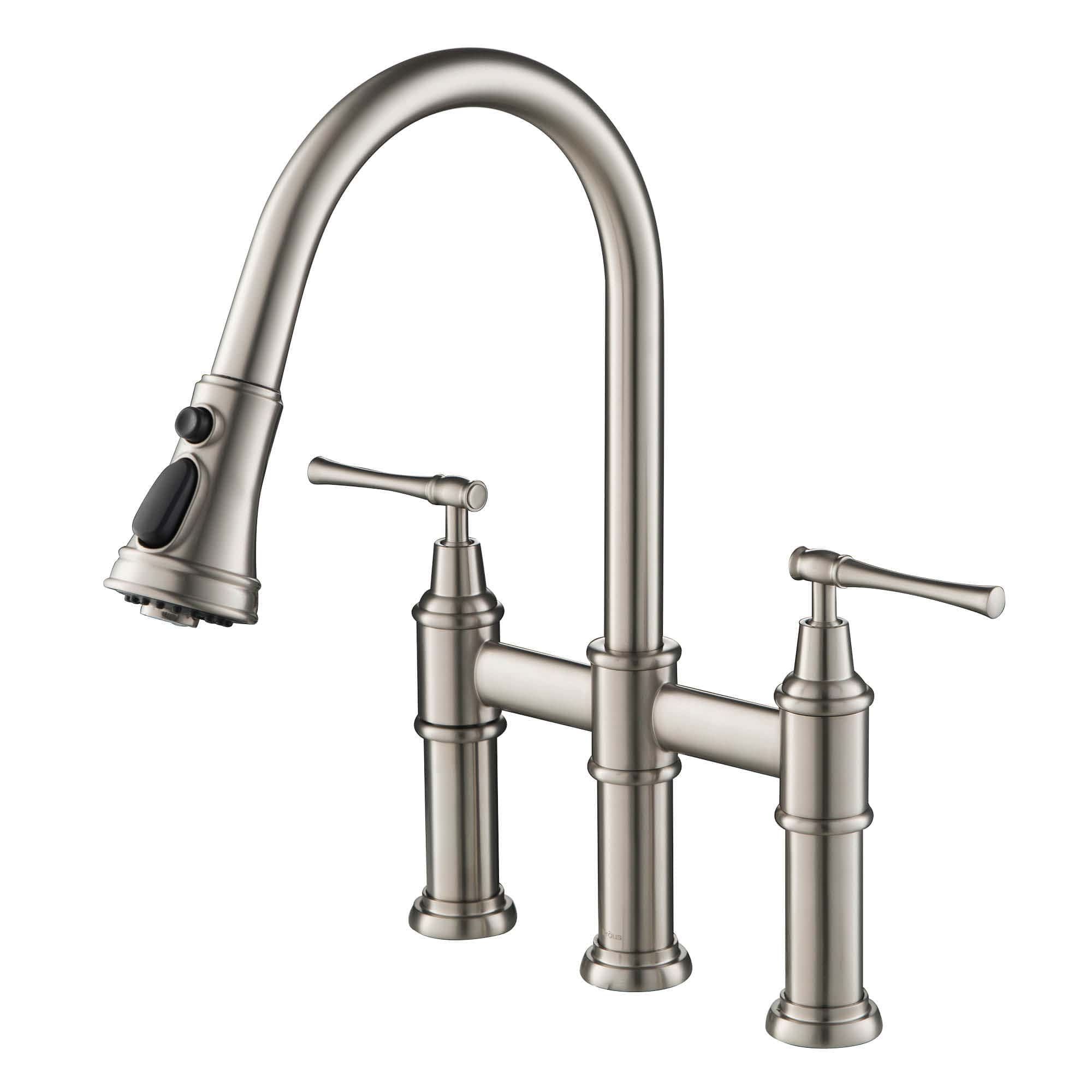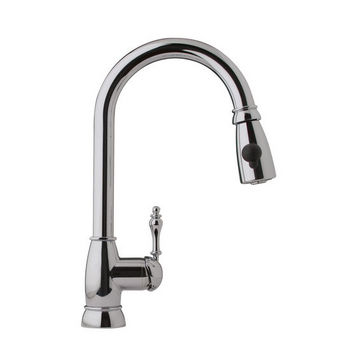Kitchen faucet plumbing is an essential component of any home, connecting the faucet to your water supply and ensuring a smooth, uninterrupted flow of water for cooking, cleaning, and other kitchen tasks. Understanding how your kitchen faucet plumbing works and knowing the basics of installation, maintenance, and troubleshooting can make a world of difference.
A well-functioning faucet not only adds to the kitchen’s aesthetic but also ensures that water pressure and flow remain consistent. Plumbing for a kitchen faucet includes various parts, such as the water supply lines, valves, connectors, and the faucet itself. With a bit of knowledge and some simple tools, homeowners can often tackle basic plumbing issues themselves, saving time and money.

When it comes to installing a kitchen faucet, it’s crucial to ensure you have the right type of faucet for your sink configuration. Kitchen faucets come in several varieties, including single-hole, centerset, and widespread faucets, each requiring a different number of holes in the sink or countertop.
Additionally, modern faucets often come with added features like pull-out sprayers or touchless technology, which may require additional setup or electrical connections. Having the proper tools—such as an adjustable wrench, basin wrench, and plumber’s putty—will make the installation process smoother. Typically, the installation involves shutting off the water supply, removing the old faucet, and connecting the new one to the water lines using flexible supply tubes.
One key component of kitchen faucet plumbing is the shut-off valve, located under the sink. These valves control the flow of water to the faucet, allowing you to turn off the water supply in case of repairs or replacement. Most shut-off valves are quarter-turn valves, which makes them easy to operate. However, if your shut-off valves are old or corroded, it may be wise to replace them during a faucet installation to prevent leaks.
Replacing these valves is usually a straightforward task, involving loosening the old valve with a wrench, removing it, and attaching a new valve to the supply line. A high-quality shut-off valve can help extend the life of your faucet by protecting it from sudden surges in water pressure.

The supply lines play an equally important role in faucet plumbing. These are typically flexible hoses made from braided stainless steel or plastic that connect the faucet to the main water lines. Stainless steel supply lines are durable and resistant to kinks and bursts, making them the preferred choice for many homeowners. When connecting supply lines, it’s essential to ensure a snug fit to prevent leaks; over-tightening can damage the lines or the connectors while under-tightening may lead to slow leaks. Checking the connections periodically can help catch any issues early, especially in high-use areas like the kitchen.
Another vital component in kitchen faucet plumbing is the aerator, a small screen at the tip of the faucet spout that regulates water flow and reduces splashing. Over time, aerators can become clogged with mineral deposits, leading to reduced water pressure. Cleaning or replacing the aerator is a simple task that can significantly improve water flow. To clean it, unscrew the aerator from the faucet, soak it in vinegar for a few hours to dissolve mineral buildup, and reattach it. Some faucets come with aerators that can be adjusted for different flow rates, giving you control over water pressure.
Leaks are a common issue in kitchen faucet plumbing and can occur in various parts, including the faucet base, handles, or supply lines. A leak can be caused by worn-out seals, damaged washers, or loose connections. Identifying the source of the leak is crucial for effective repair. For example, if water is leaking from the faucet handle, it could indicate an issue with the O-ring or cartridge inside the faucet. If the leak is beneath the sink, it’s more likely an issue with the supply lines or shut-off valve. Addressing leaks promptly is essential to prevent water damage and mold growth.

In modern kitchen faucets, the cartridge is a vital component responsible for controlling the water flow and temperature. Cartridges vary by faucet model, so if yours becomes worn or damaged, it’s crucial to replace it with the correct part. Replacing a cartridge usually involves removing the handle, pulling out the old cartridge, and inserting a new one. A faulty cartridge can result in irregular water flow or difficulty in adjusting water temperature. Many faucet manufacturers provide replacement cartridges and detailed instructions, making it a manageable DIY repair for homeowners.
If you’re facing low water pressure, your kitchen faucet’s plumbing may need a closer inspection. Low pressure can result from a clogged aerator, a partially closed shut-off valve, or mineral buildup within the faucet itself. Hard water can leave mineral deposits in your plumbing, reducing water flow over time. Addressing low pressure often starts with cleaning the aerator, but if the issue persists, inspecting the supply lines and valves can reveal blockages. In extreme cases, you might need to replace sections of the plumbing to restore full water pressure.
When dealing with kitchen faucet plumbing, understanding water temperature settings is also essential. The faucet typically connects to both hot and cold water lines, allowing for mixed-temperature control. However, if the temperature mix isn’t quite right, adjusting the faucet’s temperature limiter or checking the water heater settings can help. Temperature limiters are often set during installation to prevent scalding, especially in homes with young children. These limiters restrict how far the handle can turn toward hot water. Adjusting these settings can improve comfort and safety in the kitchen.

Drainage is another aspect of kitchen faucet plumbing, especially if your faucet includes a pull-down sprayer. Ensuring proper drainage prevents water from backing up, which can damage both the faucet and the sink. This setup may involve a separate hose that needs occasional cleaning to prevent clogs. Pull-down sprayers, popular in modern faucets, require flexible hoses that can handle repeated use without kinking. These hoses should be checked periodically for signs of wear, as a damaged hose can lead to leaks beneath the sink.
Plumbing codes and regulations are also an essential consideration. Adhering to local codes helps ensure safe, efficient plumbing and can prevent costly fines or issues if you decide to sell your home. Certain codes may dictate the type of materials used, proper pipe spacing, and correct installation of shut-off valves. Ensuring compliance with plumbing codes often involves consulting a professional plumber, especially for complex installations or remodels.
Regular maintenance of your kitchen faucet plumbing can extend the life of your faucet and prevent issues before they become major problems. Simple tasks, like cleaning the aerator, checking connections, and inspecting hoses, can make a big difference. Regular maintenance can prevent leaks, improve water flow, and keep the faucet operating smoothly. Taking the time to familiarize yourself with the parts of your faucet and understanding how they work will empower you to handle small repairs confidently.

Common Mistakes to Avoid:
Over-Tightening Connections: While it’s crucial to ensure tight connections, over-tightening can strip threads, damage fittings, and lead to leaks. This is particularly true for delicate parts like supply lines and aerators, where gentle tightening is often sufficient.
Using the Wrong Replacement Parts: Every faucet model has unique components, so using generic parts or cartridges can cause issues. Always consult the manufacturer’s specifications to ensure compatibility with your faucet.
Neglecting Aerator Maintenance: Ignoring regular aerator cleaning can lead to reduced water pressure over time. Simple, periodic cleaning can prevent clogs and maintain smooth water flow.
Failing to Turn Off the Water Supply: Before performing any repairs or maintenance, always turn off the water supply. Forgetting this can lead to water leaks or flooding, especially when disconnecting supply lines.
Ignoring Leaks: Small leaks may seem harmless, but they can lead to significant water damage and mold growth if left unattended. Regularly check for leaks under the sink, at the base, and around faucet handles.
Skipping Professional Help for Complex Issues: While many plumbing tasks are DIY-friendly, certain issues, such as re-routing water lines or major repairs, require professional expertise to avoid further complications.

How do I install a kitchen faucet? Installing a kitchen faucet involves turning off the water supply, removing the old faucet, and attaching the new one. The process can vary depending on the type of faucet and sink configuration. It’s essential to follow the manufacturer’s instructions closely to ensure a secure fit and proper connection.
Why is my kitchen faucet leaking? A kitchen faucet can leak for several reasons, including worn-out seals, damaged cartridges, or loose connections. Leaks from the handle or spout often indicate an issue with internal components like the cartridge, while leaks under the sink may be due to issues with supply lines or the shut-off valve.
How do I fix the low water pressure in my kitchen faucet? Low water pressure in a kitchen faucet may be caused by a clogged aerator, mineral buildup, or partially closed valves. Cleaning the aerator and checking the shut-off valves are common solutions. If these don’t resolve the issue, there may be blockages in the supply lines.
What is the purpose of the faucet cartridge? The cartridge in a kitchen faucet controls water flow and temperature. Over time, cartridges can wear out, leading to issues with water pressure or temperature control. Replacing the cartridge with a compatible one can restore proper function to your faucet.
How often should I clean the faucet aerator? Cleaning the aerator every few months helps maintain good water pressure and flow. If you live in an area with hard water, you may need to clean it more frequently to prevent mineral buildup that can restrict water flow.
Is it necessary to hire a professional to install a kitchen faucet? While many homeowners can handle faucet installation with the right tools, complex setups or issues with plumbing may require a professional. Hiring a plumber can help ensure that the installation meets local codes and is done safely and efficiently.

Related Posts:
- Cottage Style Kitchen Faucets
- Water Ridge Brushed Nickel Pull Out Kitchen Faucet Fp2b0000
- Replace Moen Kitchen Faucet Cartridge 1225
- How To Replace A Moen Kitchen Faucet Spray Hose
- Single Lever Kitchen Faucet Repair
- Cadet Kitchen Faucet
- Banbury Pull Out Kitchen Faucet
- Moen Kitchen Faucet Leak Repair
- Brasscraft Kitchen Faucets
- Delta Cassidy Arctic Stainless 1 Handle Pull Down Kitchen Faucet